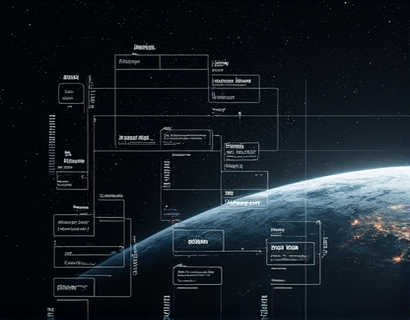Maximizing Leadership Efficiency: A Comprehensive Dashboard for Streamlined Team Management and Enhanced Productivity Across Diverse Industries
In today's fast-paced business environment, effective leadership is crucial for driving success and maintaining a competitive edge. For business leaders and organizational managers, managing large and diverse teams can be a daunting task. The complexity of overseeing multiple departments, ensuring seamless communication, and making informed decisions can often lead to inefficiencies and bottlenecks. To address these challenges, a comprehensive dashboard has been developed, designed to streamline team management and enhance productivity across various industries. This advanced tool is not just a management solution but a strategic asset that empowers leaders to optimize their processes and achieve outstanding results.
The need for an efficient leadership dashboard stems from the growing complexity of modern organizations. With teams spread across different locations, time zones, and functional areas, traditional management methods often fall short. A comprehensive dashboard offers a centralized platform that integrates various aspects of team management, from project tracking and performance analytics to communication tools and resource allocation. By consolidating these functions into a single interface, leaders can gain a holistic view of their operations, identify areas for improvement, and take proactive measures to enhance productivity.
Key Features of the Comprehensive Dashboard
The dashboard is equipped with a suite of features tailored to meet the diverse needs of business leaders. One of the core functionalities is real-time data visualization, which allows leaders to monitor key performance indicators (KPIs) at a glance. These KPIs can range from team productivity metrics to project completion rates and employee engagement levels. By having access to up-to-date and accurate data, leaders can make informed decisions quickly, reducing the time spent on data collection and analysis.
Another critical feature is the project management module. This module enables leaders to oversee multiple projects simultaneously, assign tasks, set deadlines, and track progress. The dashboard provides a clear overview of each project's status, helping leaders to identify potential delays and take corrective actions promptly. This level of visibility ensures that projects stay on track, resources are utilized efficiently, and deliverables are met on time.
Enhancing Communication and Collaboration
Effective communication is the backbone of any successful organization. The comprehensive dashboard addresses this by incorporating advanced communication tools. Integrated chat and messaging features facilitate seamless communication among team members, regardless of their physical location. This real-time communication helps break down silos, fosters collaboration, and ensures that everyone is aligned with the team's goals and objectives.
Moreover, the dashboard supports document sharing and collaboration. Team members can access and work on shared documents in real time, reducing the need for back-and-forth emails and version control issues. This not only speeds up the workflow but also ensures that all team members are working with the most up-to-date information. The ability to track changes and contributions further enhances transparency and accountability within the team.
Strategic Decision-Making and Reporting
One of the most significant advantages of the comprehensive dashboard is its role in strategic decision-making. The platform provides robust analytics and reporting tools that offer deep insights into team performance and organizational health. Leaders can generate custom reports based on specific KPIs, time periods, and departments, enabling them to assess the effectiveness of their strategies and make data-driven adjustments.
Predictive analytics is another powerful feature that aids in forecasting future trends and identifying potential risks. By analyzing historical data and current metrics, the dashboard can provide insights into future performance, helping leaders to proactively address challenges and capitalize on opportunities. This forward-looking approach is essential for maintaining a competitive advantage and ensuring long-term success.
Customization and Scalability
Every organization is unique, with its own set of processes, workflows, and requirements. The comprehensive dashboard is designed with flexibility in mind, offering high levels of customization to fit the specific needs of any business. Leaders can tailor the dashboard to their organization's structure, define custom KPIs, and configure workflows to match their operational processes. This adaptability ensures that the tool remains relevant and effective as the organization evolves.
Scalability is another key aspect of the dashboard. Whether the organization is a small startup or a large enterprise, the platform can scale to accommodate growing teams and expanding operations. The infrastructure is built to handle increased data volumes and user activity without compromising performance, ensuring a smooth and efficient user experience.
Integration with Existing Systems
Integration with existing systems and tools is crucial for a seamless transition and maximum efficiency. The comprehensive dashboard is designed to integrate smoothly with popular project management, CRM, and HR systems. This interoperability allows for a unified view of data across different platforms, eliminating the need for manual data entry and reducing the risk of errors. Leaders can leverage the dashboard in conjunction with their current tools, enhancing overall productivity and streamlining operations.
API support is also provided, enabling developers to create custom integrations and extend the dashboard's functionality. This flexibility ensures that the platform can adapt to the unique technological landscape of any organization, further enhancing its value as a management tool.
User Experience and Accessibility
The user experience is a top priority in the design of the comprehensive dashboard. The interface is intuitive and user-friendly, minimizing the learning curve for new users. Dashboard navigation is straightforward, with clear menus and well-organized sections. This design ensures that leaders and team members can quickly find the information they need and perform their tasks efficiently.
Accessibility is another critical consideration. The dashboard is optimized for use on various devices, including desktops, tablets, and smartphones. This multi-device support ensures that leaders can access the platform from anywhere, at any time, maintaining productivity and responsiveness even when on the go.
Case Studies and Success Stories
The effectiveness of the comprehensive dashboard can be seen in the success stories of various organizations across different industries. A leading technology firm, for instance, implemented the dashboard to manage its global development teams. The real-time data visualization and project management features helped the firm reduce project completion times by 20% and improve team collaboration significantly. The leader reported a marked increase in employee satisfaction and a more agile response to market changes.
In the healthcare sector, a major hospital network adopted the dashboard to streamline its operational workflows. The integrated communication tools and customizable KPIs enabled the hospital to enhance patient care coordination and reduce administrative burdens. The dashboard's predictive analytics helped the network anticipate and mitigate potential issues, leading to improved patient outcomes and operational efficiency.
Conclusion
The comprehensive dashboard represents a significant leap forward in leadership efficiency and team management. By providing a centralized platform for data visualization, project management, communication, and strategic decision-making, it empowers business leaders to optimize their processes and drive productivity across diverse industries. The customizable and scalable nature of the dashboard ensures that it meets the unique needs of any organization, making it an invaluable tool for modern leadership. As organizations continue to grow and evolve, the comprehensive dashboard stands as a robust solution for maintaining a competitive edge and achieving sustained success.










































